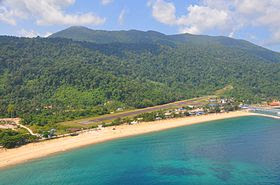As I reminisce, it seems that a lot had been added to my collection
of flying techniques since the day I had my first lesson. Yet I find that the
most critical and useful techniques were actually taught me during the first fifty
hours of flying. For this I have my instructors to thank for. I was lucky to have
had two highly competent individuals as my mentors.
The first was Manjit. He was a tall handsome young man who was
collecting his hours before he could join the airlines. He was methodical in
presenting his preflight brief and would ask me quick questions on the aircraft
as we walked to it, inside it and later as we walked back for our debriefs. Questions
could vary from how much fuel could the tanks take to why the wings wash out at
the tips. In the air he would ask if the engine would cut out if he switched off
the ignition, and then as I said yes, proceeded to actually switch it off. Manjit
led me to my solo by which time I had the answers to most, if not all, the
questions.
After soloing, another instructor took over my training. Chandran
was a QFI (Qualified Flying Instructor) and was quite elderly with an above
average girth. He was soft-spoken and a man of few words. If he ever raised his
voice, it would be a scream to get me to add power when we were sinking too
fast or to go around when we were too high or in such similar situations.
Like Manjit did, Chandran too made me master the mnemonics which
remain with me till today. From HASELL to TVMDC, the mnemonics will never be forgotten
and have been found to be useful in times of need.
Chandran had these tricks and formulae to make complex procedures
simple. With short and sharp instructions, he would guide me as to what the requirements
are for, say, a good approach. "Before base speed 80kts, flaps one, speed 70kts,
turn base and descend....turn to final to complete by 300ft AGL, flaps two...speed
65kts, descent rate 200fpm..." and on he went. Most of the time his formulae
worked and I lived by them.
One of my favourite destinations was Tioman Island less than
two hours flying time away from my base. Although exotic in itself (the island “Bali
Hai” in the musical movie “South Pacific” is in real life that island), the
attraction to pilots is because its 900-metre runway is enclosed on three sides
by steep hill slopes and the fourth side by the sea.
APPROACHING FROM THE WEST
Only pilots checked out on the airport by an instructor are
allowed to land there. Chandran had a simple formula for landing there –
establish right base at 300ft AGL on feet dry, cling close to the hill on the
left while descending, turn final and select full flaps while skimming the
grove of coconut palms that stretch to the runway’s edge, then when clear of
the palms, cut power completely, push the aircraft down to the runway and
ensure that it drops on its main wheels carrier-style. “Don’t worry,” he said,
“the Cessna’s main undercarriage is made for heavy landings.” In later years, the runway was lengthened and the palms on the approach cleared away.
CHANDRAN'S FORMULA
(AFTER RUNWAY EXTENSION)
EARLY BASE VIEW
(BEFORE RUNWAY EXTENSION)
Wikipedia
I have never had any problem landing at the island despite
tailwinds sometimes and I owe one to Chandran. As I continued flying over the
years, Manjit’s and Chandran’s words constantly echoed in my head guiding me to
do the right things as the situations demanded.



